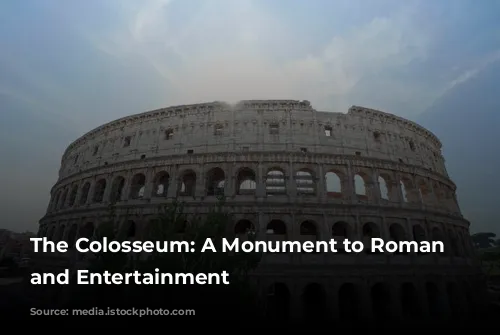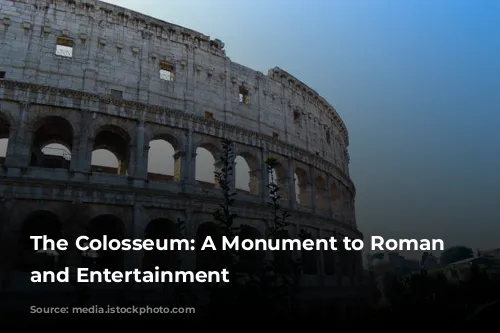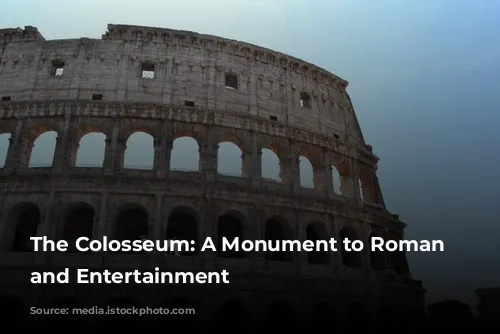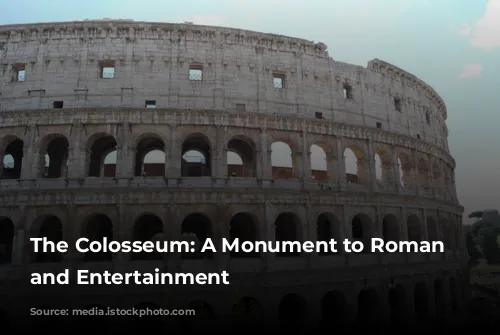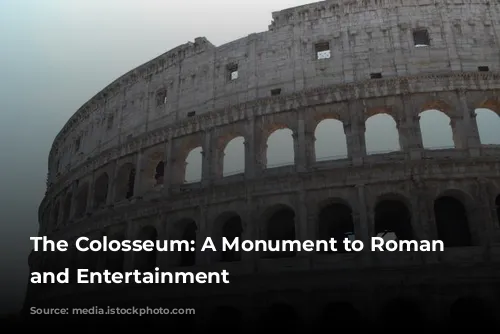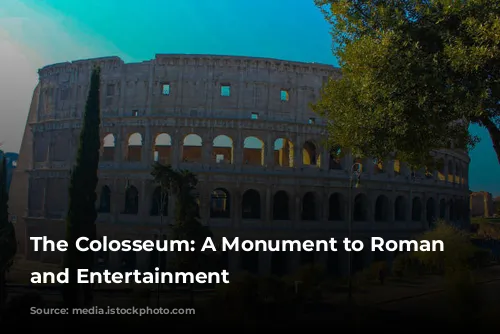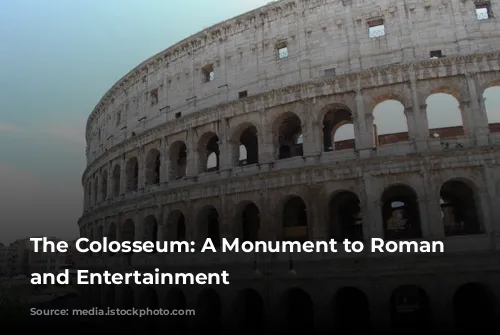The Colosseum, the largest amphitheater ever built in the Roman world, stands as a testament to the grandeur and brutality of ancient Rome. Known as the “Flavian Amphitheater”, this iconic landmark was begun by Emperor Vespasian of the Flavia family and completed by his son Titus in 80 AD.
A Spectacle of Power
The Colosseum’s inauguration was a lavish spectacle that lasted for one hundred days! Crowds flocked to witness gladiatorial combats, exotic animal hunts, and dramatic “naumachias” – staged sea battles that recreated famous naval confrontations of the past. The historian Suetonius documented that thousands of animals, a staggering 5,000, were slaughtered for these shows.
The Colosseum’s name, however, wasn’t always “Colosseum”. This name emerged later, in the writings of the Venerable Bede, a medieval monk. He predicted that Rome would stand as long as the Colosseum, and when the Colosseum fell, so too would Rome and the world. This prophecy, perhaps inspired by the colossal statue of Emperor Nero, known as “the Colossus”, that once stood near the amphitheater, helped solidify the name “Colosseum”.
Architectural Brilliance
The Colosseum’s imposing structure, once gleaming white with travertine stone slabs, is elliptical in shape to accommodate a greater number of spectators. The four floors of the structure, with eighty arches each on the first three levels, were adorned with statues of immense size. This architectural masterpiece was erected in less than ten years, a remarkable feat made possible by the Romans’ mastery of the arch technique. The arch, a key component of Roman architecture, allowed the Romans to distribute weight effectively, as seen in their aqueducts. The Colosseum, in a sense, was an ingenious assembly of stacked aqueducts, each level supporting the one above.
The Colosseum’s Transformation
Though the Colosseum once housed gladiatorial combat and wild animal hunts, it fell into disuse as the Roman Empire declined. Its marble, lead, and iron were plundered to build other structures, including the Barberini Palace, Piazza Venezia, and even St. Peter’s Basilica. Today, we see only a skeleton of the Colosseum’s original grandeur, with three-fifths of its outer wall missing.
A Seat for Every Citizen
The Colosseum could accommodate up to 70,000 spectators, with seating arranged based on social status. The common people occupied the upper tiers, while the more privileged sat closer to the arena. The front row was reserved for senators, vestals, priests, and, of course, the emperor.
Like modern sports stadiums, the Colosseum provided shade from the sun using a “Velarium”, an enormous linen tarpaulin stretched across the top of the structure. This complex system required the coordinated efforts of 100 sailors from the Imperial fleet to maneuver it to the beat of a drum.
The Arena and its Secrets
The Colosseum’s arena floor, once a mix of brick and wood, is gone. In its place, we see the cellars that housed the equipment used to stage the shows. Beneath the arena, two floors of lifts and hoists, complete with rails, allowed animals and gladiators to make dramatic entrances through trapdoors, creating a sense of surprise and wonder for the audience. These elaborate systems also hoisted stage sets for hunting events.
A Spectacle for the Masses
The Colosseum served as a symbol of Roman power, linking citizens to their leader through shared experiences and a much-needed distraction from political strife.
Shows for Every Taste
The Colosseum hosted an array of spectacles, each timed for a specific slot. “Venationes”, or animal hunts, featuring both exotic animals and gladiators battling beasts, were popular in the morning. The Colosseum also served as a platform for public executions, with condemned criminals left to the mercy of ferocious beasts. “Silvae” events were also staged, with painted sets creating the illusion of a forest, complete with trees and bushes, where the animals did not necessarily have to be killed. One remarkable show featured an elephant that could write words in the sand with its trunk.
The Gladiators: Heroes of the Arena
The gladiators were the main attraction. The gladiatorial combats, held in the afternoon, were preceded by a break to clean up the arena. The gladiators would then parade into the arena, welcomed by thunderous applause from the crowds. They entered through an underground passage connected to their barracks, the Ludus Magnus. These gladiators were treated like modern sports heroes, earning fame, riches, and the admiration of their fans, especially the women.
Gladiators could be prisoners of war, offered freedom for fighting, or impoverished individuals seeking fame and wealth. They came in a variety of types, each with unique weaponry and fighting styles. The “Retiarius”, for example, used a net, trident, and dagger, while others fought with shields and sickles, or wore crested helmets and strong armor. The choice of gladiators for a fight was carefully considered for dramatic effect.
The Thrill of the Battle
The fate of a defeated gladiator was left to the audience, who would shout to the emperor, seated on his stage, for mercy or death. A raised thumb meant the gladiator lived, while a thumbs down meant his death. Victorious gladiators were rewarded with golden palm leaves and large sums of money. Servants dressed as Charon, the ferryman of the underworld, were on hand to ensure the fallen were dead, sometimes finishing them off.
A Brutal Reality
The cruelty of the spectacles staged in the Colosseum mirrored the Roman’s appetite for violence. These shows were akin to modern “splatter cinema”, but with the added visceral reality of blood, flesh, and the stench of wild animals. The effort to mask these smells with incense and perfume was futile.
The Colosseum’s Legacy
The Colosseum, as the Roman Empire declined, lost its purpose and its walls became home to confraternities, hospitals, hermits, and even a cemetery. In the Middle Ages, it became a quarry for materials, with the marble, lead, and iron being used to construct other buildings. Yet, despite the ravages of time, the Colosseum has endured, a testament to the Roman Empire’s power, cruelty, and ingenuity.
Today, the Colosseum stands as a sacred monument, designated by Benedict XIV as a symbol of the Passion of Christ, with a cross placed on a pedestal representing the suffering of Christian martyrs. This cross serves as the starting point for the Stations of the Cross on Good Friday, making the Colosseum an object of reverence for Christians worldwide.
Visiting the Colosseum today is, as Charles Dickens aptly described it, like seeing “the ghost of old Rome floating over the places its people walk in.” Its ruins offer a glimpse into a bygone era, reminding us of the power, the brutality, and the enduring legacy of the Roman Empire.
